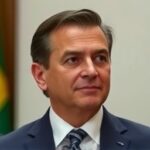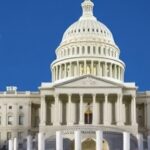In a bold diplomatic maneuver, British Prime Minister Keir Starmer is preparing to gather key Ukraine allies on the sidelines of the G20 summit in Johannesburg, aiming to forge a united front around a US-drafted peace proposal that has sparked tensions among Western nations. The initiative comes as frustration mounts over the United States’ solo negotiations with Russia, leaving traditional partners feeling sidelined in the push to end the protracted war in Ukraine.
Starmer’s move underscores the shifting sands of international diplomacy, where the US has taken the lead in crafting a roadmap to ceasefire, but without fully consulting its closest allies. Sources close to the British government indicate that the prime minister views the G20 as a critical opportunity to inject European and Commonwealth perspectives into the process, ensuring that any peace deal prioritizes Ukraine’s sovereignty and security guarantees.
Starmer’s Urgent Call for Allied Coordination in Johannesburg
As the G20 summit kicks off in the vibrant South African city of Johannesburg, Keir Starmer arrives with a clear agenda: to convene a high-level meeting of Ukraine’s staunchest supporters. This gathering, expected to include representatives from the European Union, Canada, and Australia, will focus on dissecting the US peace plan and proposing amendments to address perceived shortcomings. British officials have emphasized that while the UK supports ending the conflict, it cannot endorse a proposal that might compromise Ukraine’s territorial integrity.
The summit’s location in Johannesburg adds a layer of symbolism, highlighting the Global South’s growing role in international affairs. South Africa, as host, has maintained a neutral stance on the Ukraine-Russia war, advocating for dialogue over confrontation. This backdrop could influence discussions, with Starmer reportedly seeking to build bridges between Western allies and emerging economies that have been wary of escalating sanctions against Russia.
According to a Downing Street spokesperson, “Prime Minister Starmer is committed to a just and lasting peace for Ukraine. The G20 provides a vital platform to align our strategies and ensure no stone is left unturned in supporting Kyiv.” This sentiment echoes broader concerns within NATO circles, where the US’s unilateral approach has raised eyebrows. A recent poll by the European Council on Foreign Relations revealed that 62% of respondents in major EU countries believe more inclusive negotiations are needed, reflecting the diplomatic tightrope Starmer is navigating.
Unpacking the US-Drafted Peace Proposal’s Key Elements
The US peace plan, quietly circulated among select diplomats in recent weeks, outlines a phased approach to de-escalation between Ukraine and Russia. At its core, the proposal calls for an immediate ceasefire along current front lines, followed by international mediation on territorial disputes, particularly in Crimea and the Donbas region. It also includes economic incentives for Russia, such as eased sanctions in exchange for troop withdrawals, and bolsters Ukraine’s military aid with long-term NATO commitments.
However, details remain murky, fueling speculation and criticism. Leaked documents suggest the plan envisions a demilitarized zone along the Russia-Ukraine border, monitored by UN peacekeepers—a concession that Ukraine has historically resisted. US officials, speaking on condition of anonymity, defend the draft as a pragmatic starting point, noting that President Biden’s administration drew from previous Minsk agreements while incorporating lessons from the stalled Istanbul talks of 2022.
Critics, including voices from the UK Foreign Office, argue that the proposal underplays Russia’s aggression. “This isn’t just about maps and ceasefires; it’s about accountability for war crimes and reparations,” said a senior British diplomat. Statistics from the UN Human Rights Monitoring Mission in Ukraine paint a grim picture: over 10,000 civilian deaths since the invasion began in February 2022, with infrastructure damage estimated at $400 billion. Integrating these human costs into the peace framework is a priority for Starmer’s coalition-building efforts.
To illustrate the plan’s potential impact, consider the following key components:
- Ceasefire Timeline: 90-day halt in hostilities, with verification by OSCE observers.
- Territorial Compromises: Deferred referendums in occupied areas under international supervision.
- Economic Relief: Gradual lifting of energy sanctions on Russia tied to humanitarian aid corridors for Ukraine.
- Security Assurances: Enhanced US and EU arms packages, potentially including F-16 jets for Kyiv.
These elements, while ambitious, have not quelled doubts. Ukrainian President Volodymyr Zelenskyy, in a recent interview with BBC, stated, “Any peace must be on our terms, not dictated by aggressors or their enablers.”
Western Allies’ Frustrations with US-Led Exclusions
The revelation that the US drafted the peace plan without broader input from allies like the UK has ignited a rare public rift within the transatlantic partnership. Keir Starmer, who assumed office in July 2024 promising a “reset” in global relations, now faces testing questions about London’s influence. Insiders reveal that initial briefings on the proposal came via informal channels, leaving European leaders scrambling to catch up.
This exclusion echoes past tensions, such as the 2021 AUKUS submarine deal that blindsided France. At the G20 summit, Starmer is expected to press US Secretary of State Antony Blinken on transparency, with bilateral meetings scheduled alongside the main sessions. A joint statement from the UK, France, and Germany last week called for “multilateral engagement” in Ukraine talks, signaling a concerted pushback.
From an economic standpoint, the stakes are high. The war has driven global energy prices up by 25% since 2022, per International Energy Agency data, disproportionately affecting Europe. Britain’s reliance on imported gas makes a swift resolution imperative, yet Starmer’s government is adamant that concessions to Russia cannot come at Ukraine’s expense. “We stand with Ukraine not out of charity, but because our security is intertwined,” Starmer declared in a speech to Parliament earlier this month.
Adding to the complexity, Russia’s response has been tepid. Kremlin spokesman Dmitry Peskov dismissed the US plan as “detached from reality,” insisting on recognition of annexed territories. This stance hardens the negotiating terrain, prompting allies to explore backchannel diplomacy through neutral parties like Turkey and India, both attending the G20.
G20 Dynamics: Balancing Global South Perspectives on Ukraine
The G20 summit in Johannesburg isn’t just a venue for Western maneuvering; it’s a microcosm of divided global opinions on the Ukraine crisis. While Keir Starmer rallies his cohort, leaders from Brazil, India, and South Africa—representing the BRICS bloc—advocate for de-dollarization and multipolar solutions, often viewing the war through the lens of anti-colonial resistance against NATO expansion.
South African President Cyril Ramaphosa, opening the summit, urged “inclusive dialogue” that includes Russia’s voice, a position that irks Ukrainian delegates. Yet, this diversity could prove advantageous. Starmer’s strategy involves leveraging G20’s trade-focused agenda to tie Ukraine’s reconstruction—projected to cost $486 billion by the World Bank—to broader development goals, potentially swaying fence-sitters.
Diplomatic sources indicate side events on food security, where Russia’s Black Sea blockade has exacerbated global hunger affecting 345 million people (UN figures), might serve as entry points for peace discussions. By framing the US peace plan as a win for global stability, Starmer aims to broaden its appeal beyond the West.
Quotes from attendees underscore the high-wire act: EU High Representative Josep Borrell noted, “The G20 must not become a forum for appeasement; Ukraine’s fight is for all democracies.” Meanwhile, Indian Prime Minister Narendra Modi, a key player, has hinted at mediation roles, stating in a pre-summit address, “Peace in Ukraine benefits the world economy—let’s prioritize that.”
Path Forward: Starmer’s Vision for a Strengthened Peace Framework
As the G20 summit unfolds, the outcomes of Starmer’s convening could reshape the trajectory of the US peace plan. British diplomats are optimistic about securing commitments for a follow-up summit in London, where refined proposals could incorporate allied input on enforcement mechanisms, such as binding arbitration for territorial claims.
Looking ahead, the implications extend to NATO’s upcoming Washington summit in 2025, where Ukraine’s membership aspirations will loom large. A bolstered peace framework might accelerate integration talks, providing Kyiv with the security blanket it craves. Economically, a resolution could unlock $100 billion in frozen Russian assets for Ukraine’s rebuild, as proposed by G7 finance ministers.
Yet challenges persist. Russia’s military advances in eastern Ukraine, capturing over 500 square kilometers in the past quarter (Institute for the Study of War data), underscore the urgency. Starmer’s efforts at the G20 represent a pivotal moment: if allies unify, the US plan could evolve into a comprehensive accord; failure risks fragmented diplomacy and prolonged stalemate.
In the words of a UK envoy, “This is about more than Ukraine—it’s the future of rules-based order.” As Johannesburg buzzes with leaders, the world watches whether Starmer can bridge divides and steer toward enduring peace.









